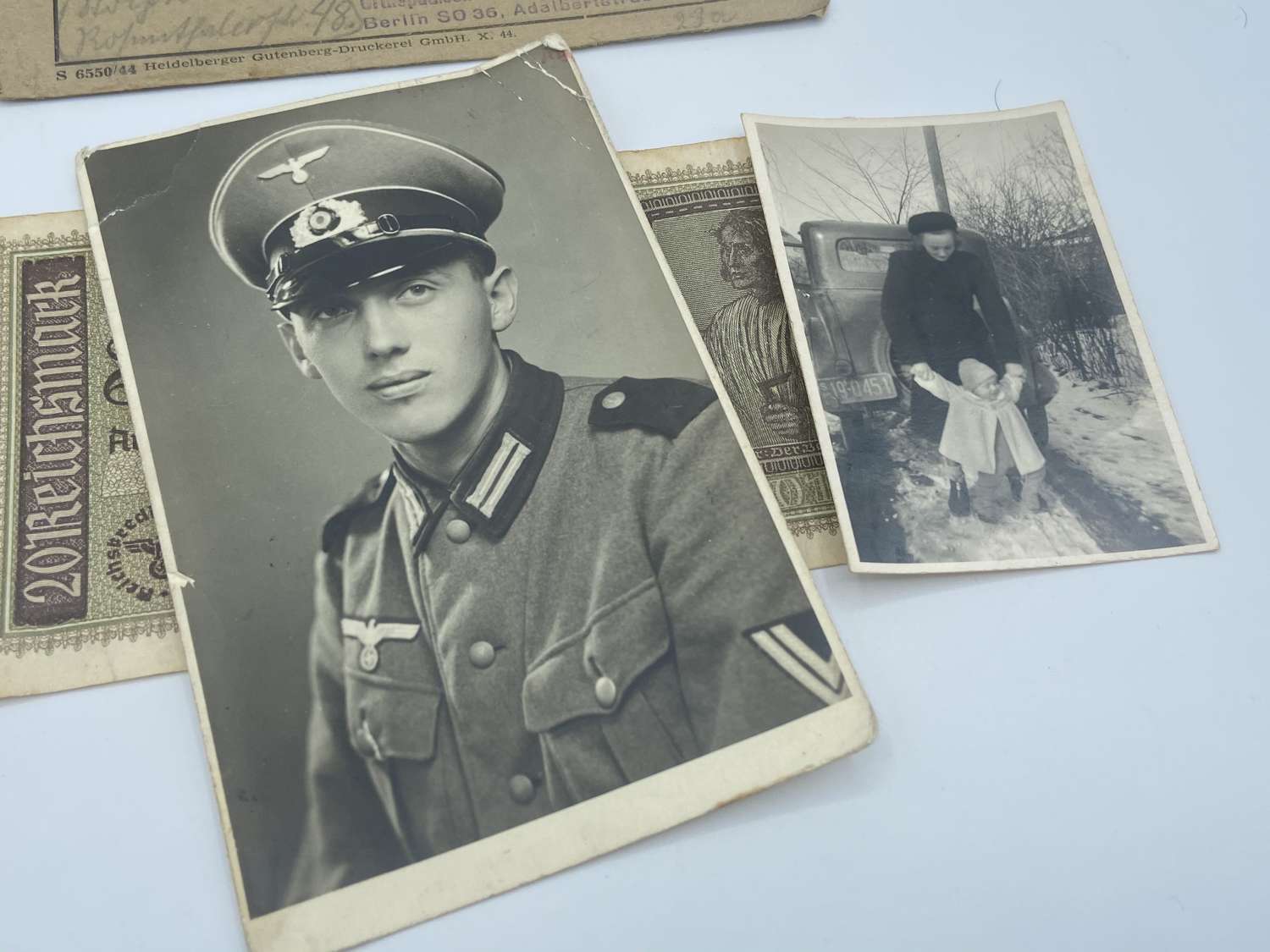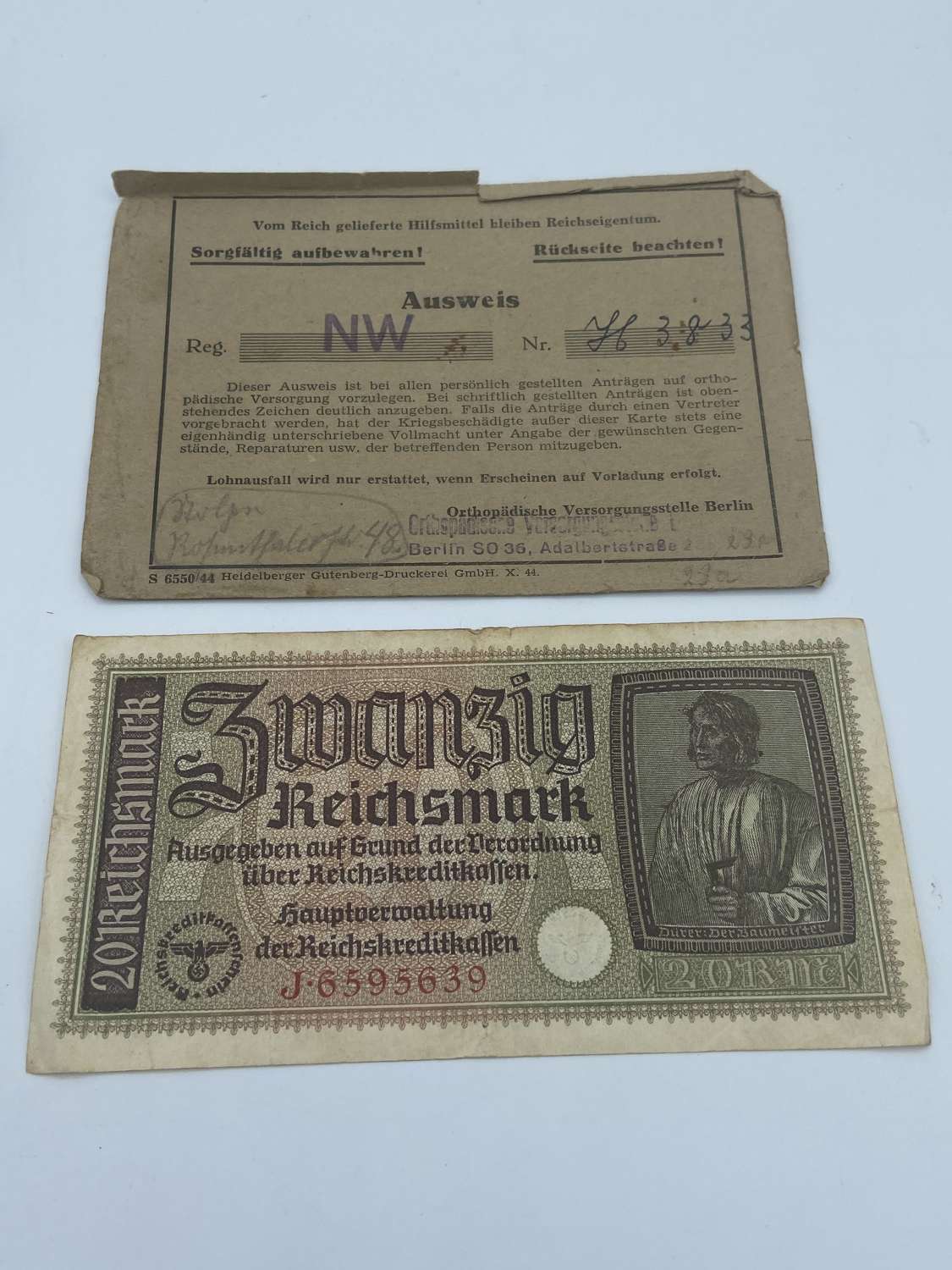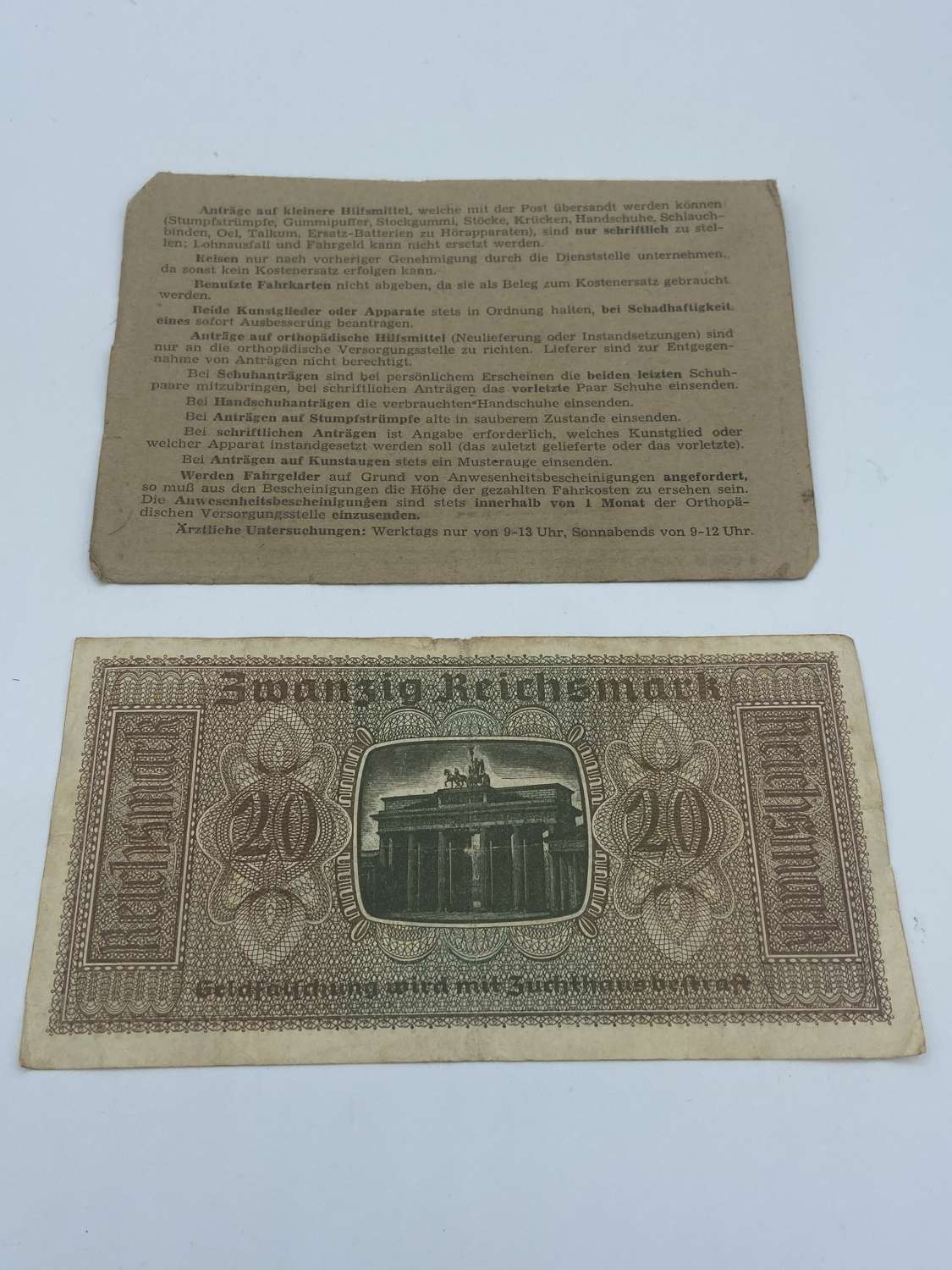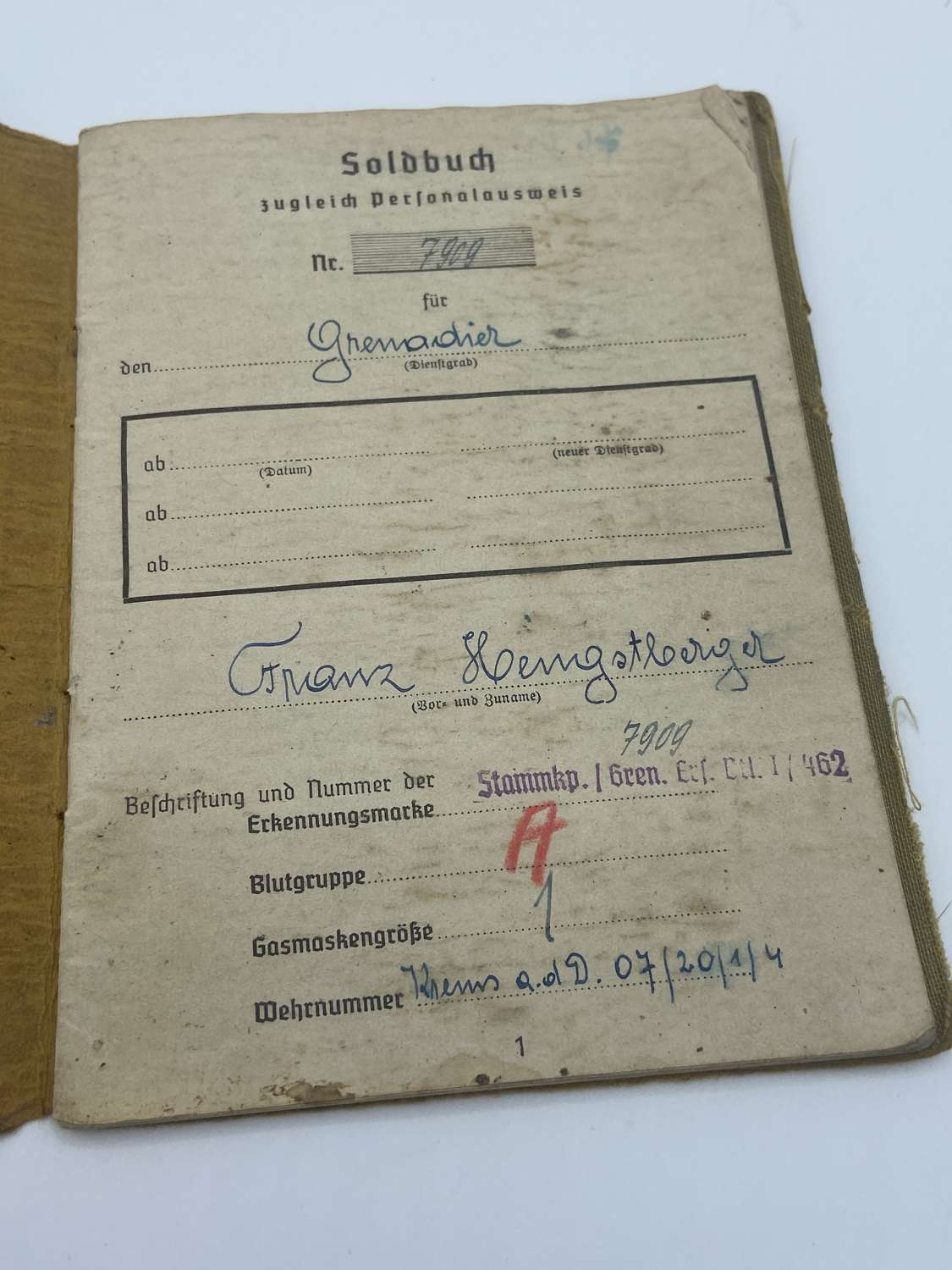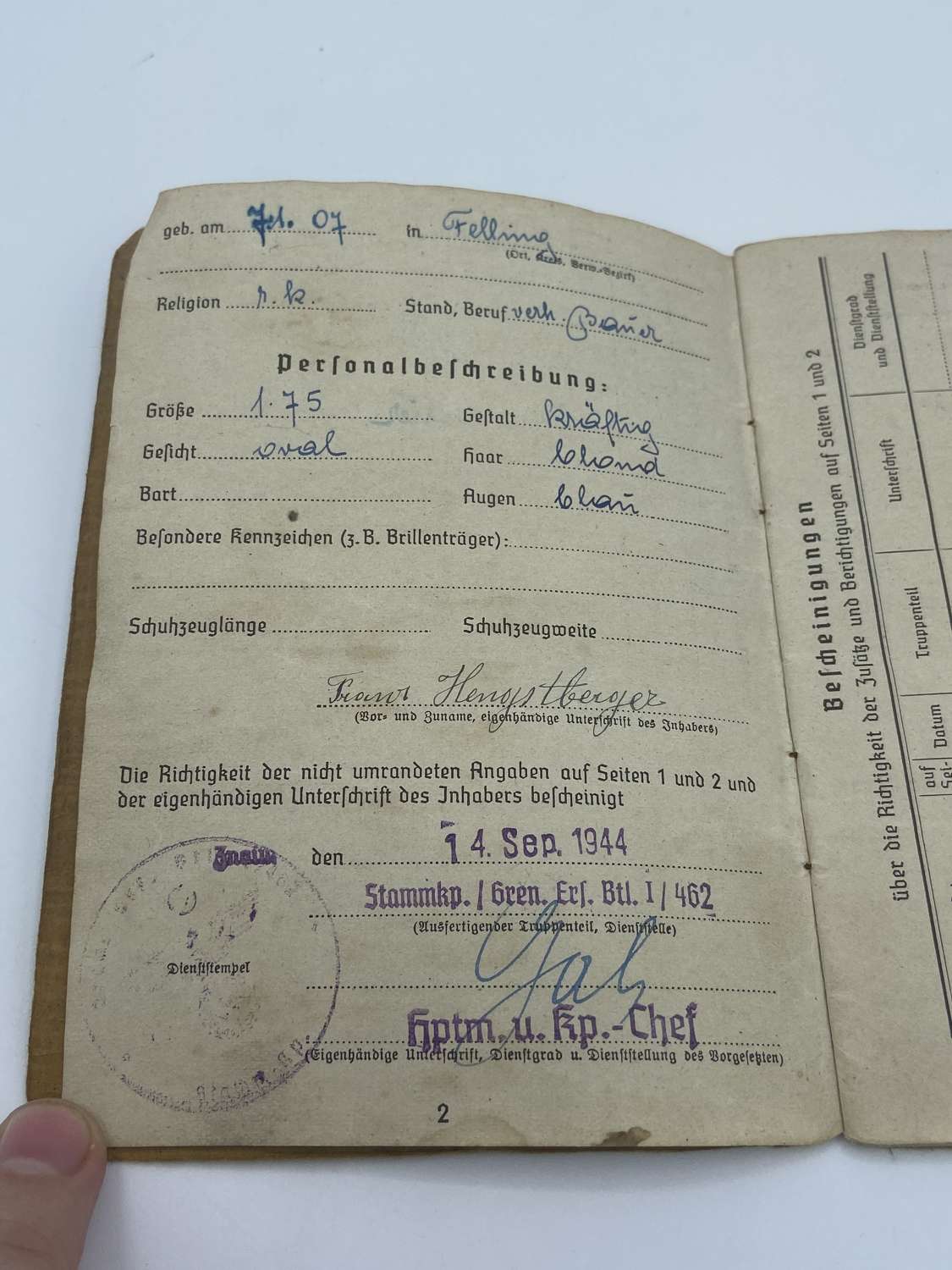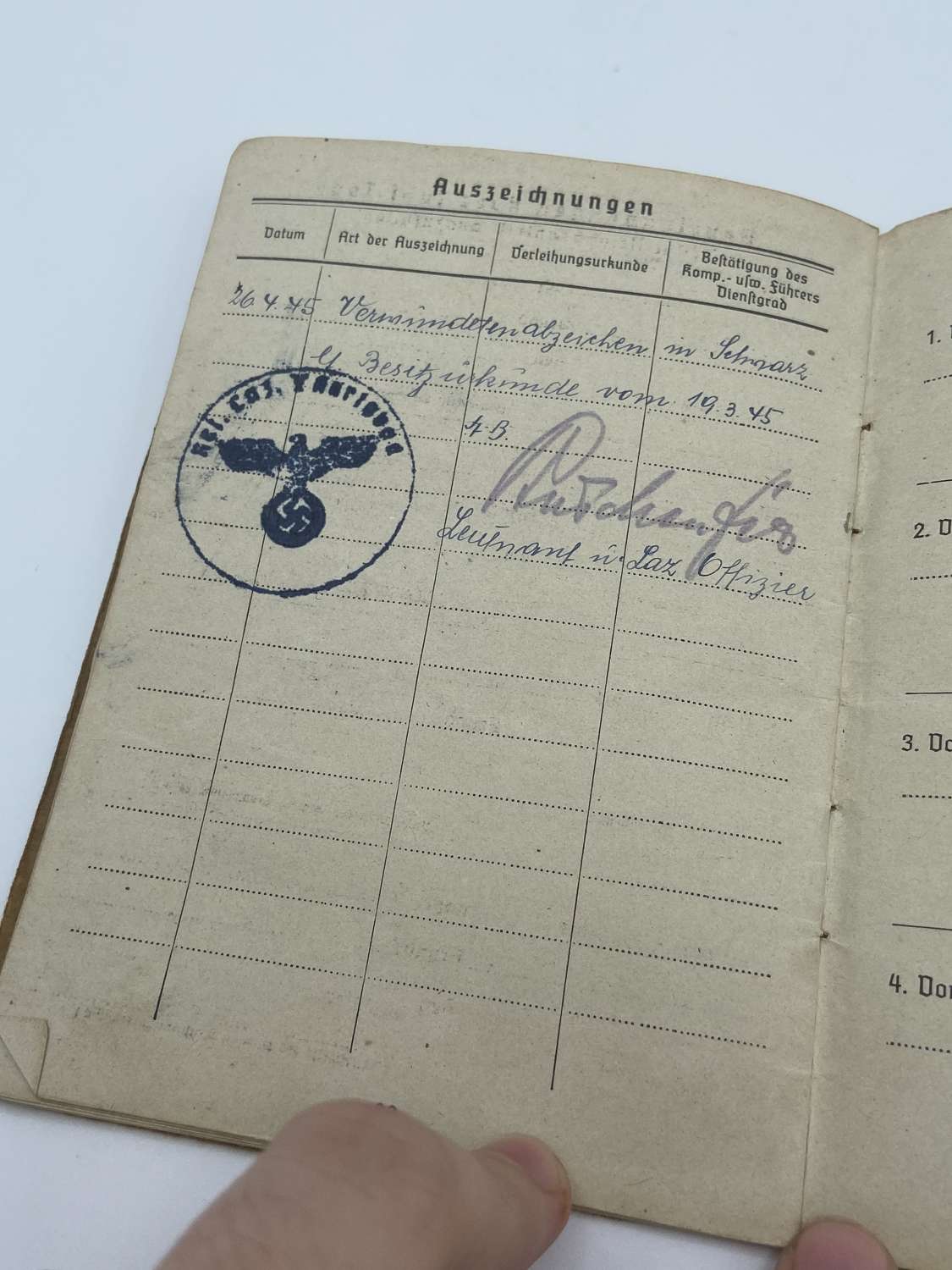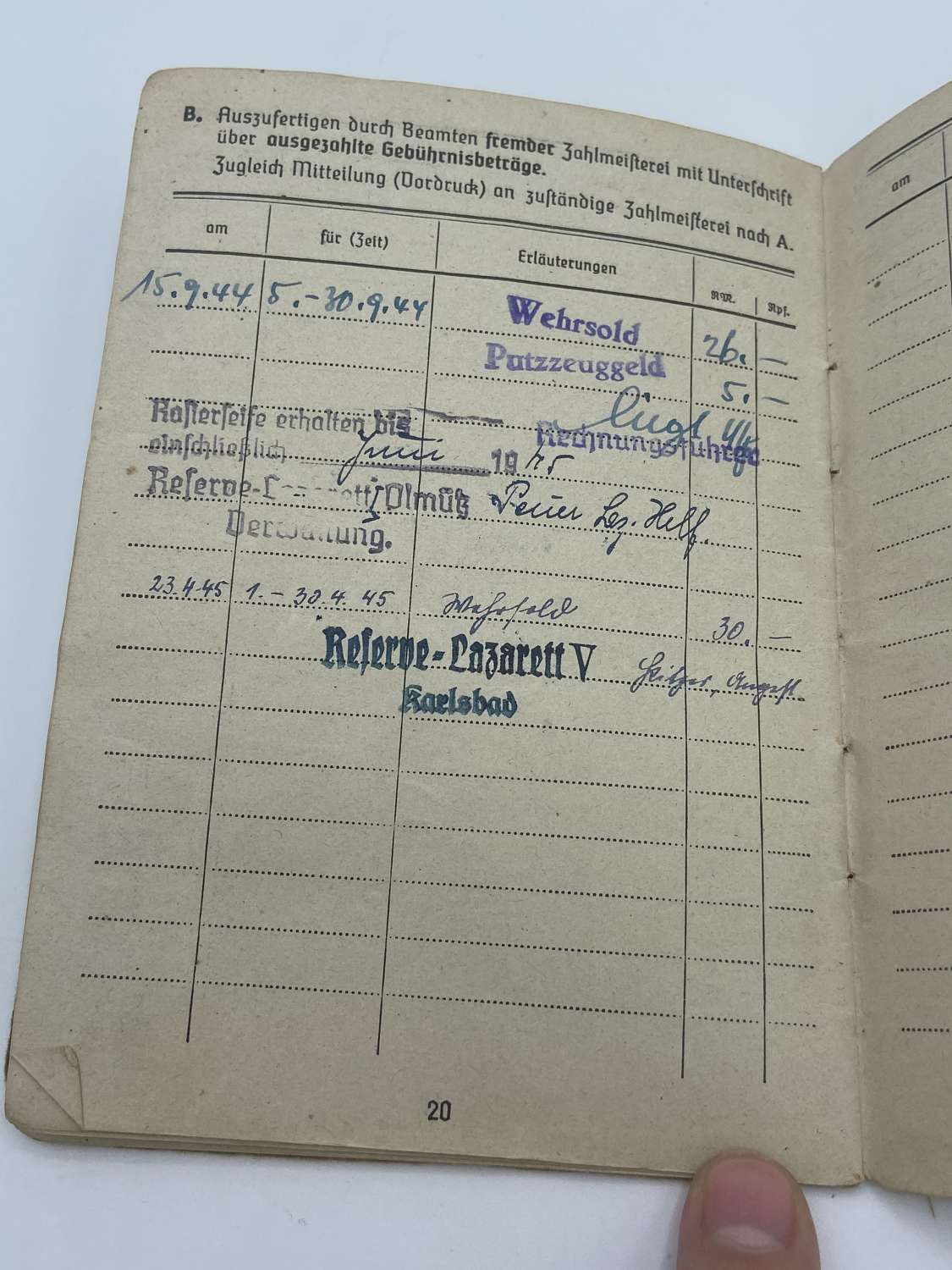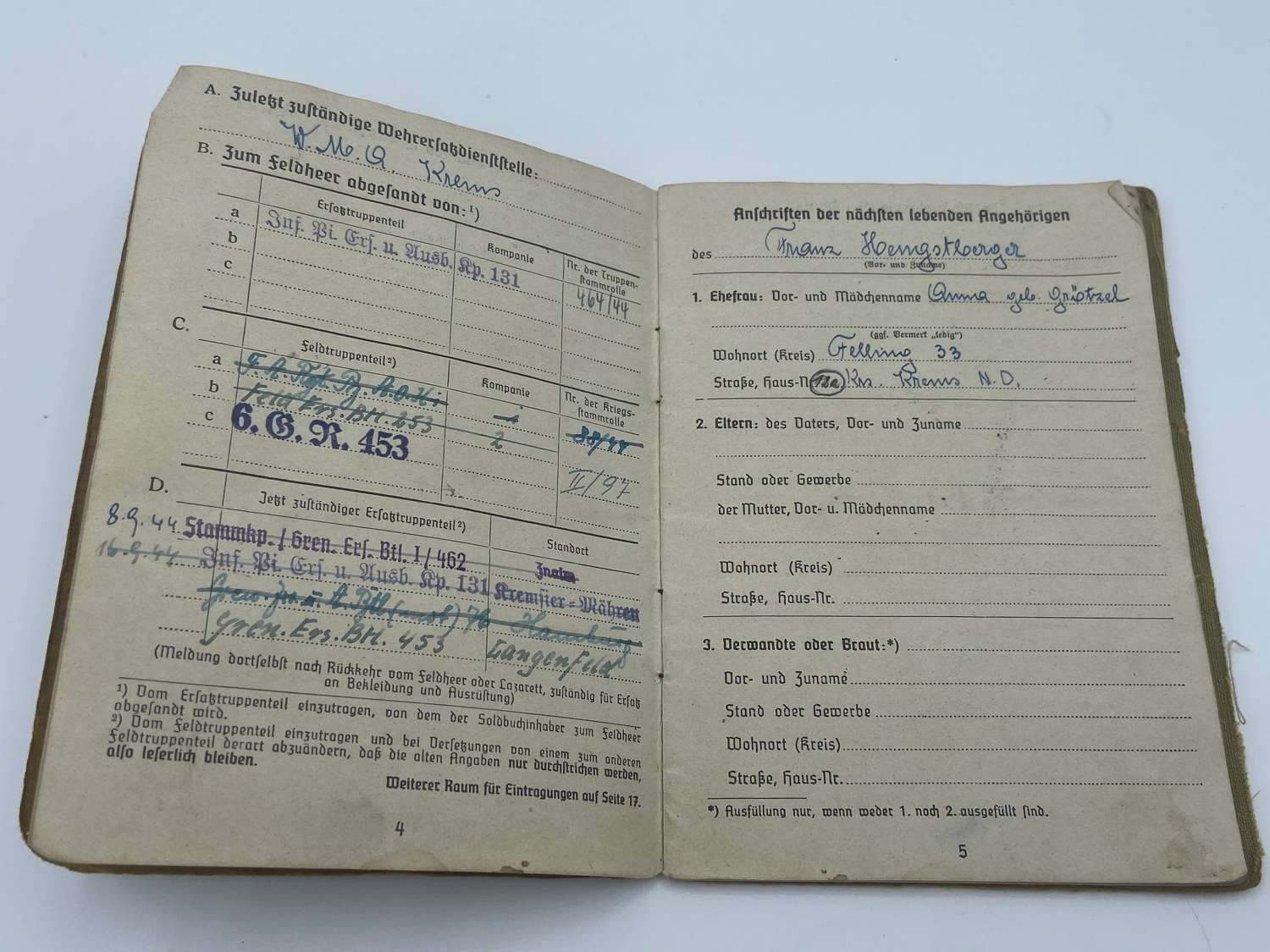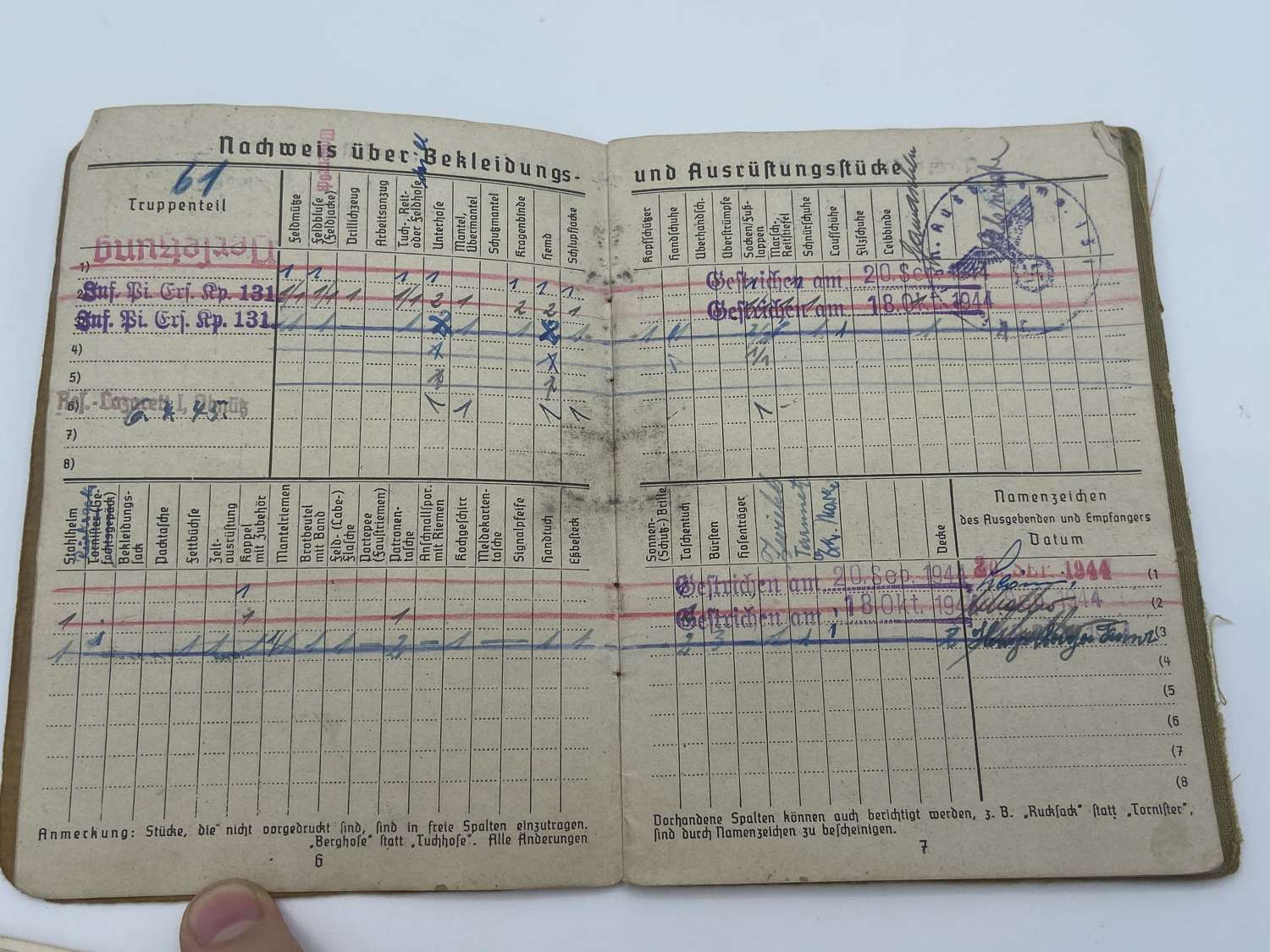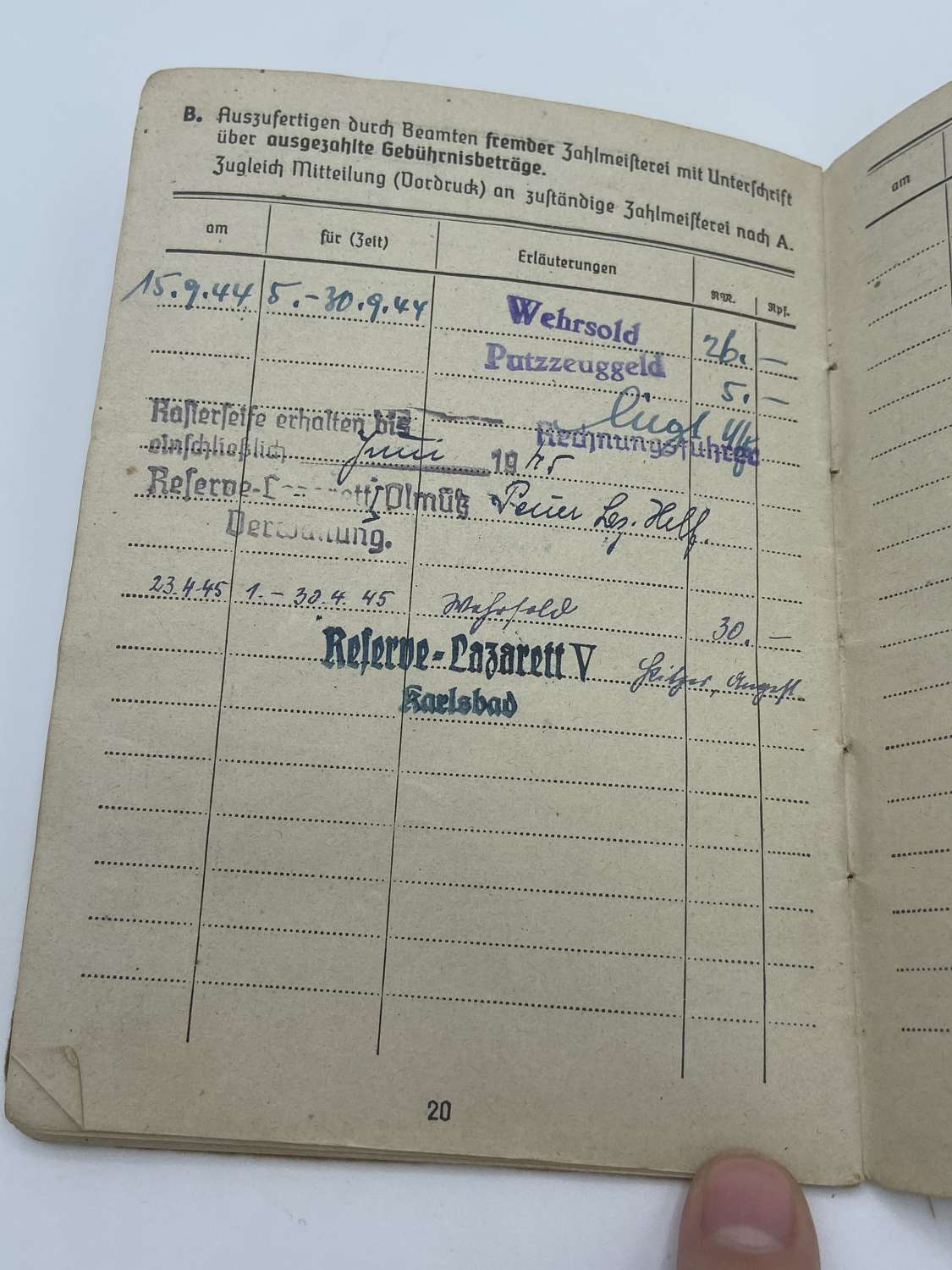Soldbuch:
Name: Franz Henofitbeifer
Born: February 1907, Felling Bavaria
Blood group: A
German Rank: Obergefreiter
British equivalent: Lance Corporal
Two Hospital Stay: 14.4.1945 & 24.5.1945. Awarded black wound badge on the 26.4.1945, but was wounded in the field 19.3.1945. He revived his black wound badge for fighting against the Russians in Operation Vienna. Operation Vienna took place on the 18th March, And Franz was injured the next day and then transferred to hospital in Carlsbad.
In his soldBuch There is also a portrait photograph of the Obergefreiter, photo of his wife and child, 20 reichmark, ID Card for orthopaedic aid supplied by the Reich Berlin.
Stammkp Gren 7909 Ers Btl i/462
Grenadier-Ersatz-Bataillon I./462
1. Franz served with the following units:
Stammkp./ Grenade. Ers. Bro. I/462 in
Znojmo, a town in the winemaking region of South Moravia, Czech Republic. 8.9.1944
Inf. bi. Ers. U. Husband. Kp. 131 in Kremfier Moravia (Mähren) region in the east of the Czech Republic (16.9.1944).
Gren. Inf. A. Bthmof 76- Hamburg
Gren. Ers. Btl. 453 in Längenfeld Austria
The battalion was set up on September 6, 1939 in Hollabrunn, in Wehrkreis XVII. The battalion provided the replacement for the 262nd Infantry Division under Division 177. On February 1, 1940, the battalion was renamed Infantry-Ersatz-Bataillon I./462. This became necessary because on January 15, 1940 in Krummau an der Moldau, also military district XVII, an infantry replacement battalion II./462 was set up. The battalion II./462 was subordinate to Division 187 after its formation. The replacement battalion I./462 was split into an infantry replacement battalion I./462 and an infantry training battalion I./462 divided. The replacement battalion II./462 was divided on October 28, 1942 into an infantry replacement battalion II./462 and a reserve infantry battalion II./462. The Reserve Infantry Battalion II./462 was placed under the 187th Reserve Division. Sometimes the reserve battalion was also referred to as the Infantry Training Battalion II./462. From November 1, 1942, the replacement battalion II./462 was subordinate to the 487 division. Replacement Battalion II./462 and Reserve Grenadier Bataillon II./462 renamed. The reserve battalion was relocated to Agram in Croatia after the renaming. The two battalions I./462 were relocated to Horn, also military district XVII, in 1943. The Reserve Battalion was disbanded in January 1944 when the 187th Reserve Division was reorganized as the 42nd Jäger Division. The Grenadier Replacement Battalion II./462 was expanded into Grenadier Replacement and Training Battalion II./462 in January 1945. The replacement battalion I./462 was in Znaim in 1945, also military district XVII.
in March, as part of 2 Army, the Division took part in Operation “Spring Awakening”. The goals of this operation was to break through the Russian positions and establish a solid front on the Danube, to secure oil and grain reserves vital towards the continuation of the German war effort and to relieve the siege of Budapest. Owing to adverse terrain and poor weather conditions and despite good early progress the offensive failed to achieve any of its objectives and on the 17 March 1945 “Spring Awakening” finally ran out of steam on the strong defensive positions at Sakeresztur.
On the 18 March 1945 the Russians launched their own large scale offensive, “Operation Vienna”, supported by strong armoured and air forces. Despite efforts to hold their positions the Russians forced a breakthrough which threatened to envelop all German forces locally. Alongside 1st Panzer Division and other German formations the Reichsgrenadier Division supported by remaining Panzer forces was able to break out of the cauldron. Casualties were high, amongst the fallen was the Divisional Commander, GenLt von Rost and the Chief of Staff, Major i.G. Vogl. Conducting a fighting retreat the Division managed to avoid further encirclement by withdrawing to the north of Lake Balaton and then westwards towards Austria. During the last days of March the Division took up positions in the “Reichschutzstellung”, this line was to be the last line of defence before the Russians crossed into the southern borders of the Reich and it extended from Bratislava in Slovakia to the north, southwards over the Brucker and Ödenburger gate, through Deutschkreutz in Burgenland and on to the southwest to the east of Ljubljana.
The main thrust towards Vienna was launched from the Stuhlweissenburg area and the City was lost after heavy fighting on the 13 April 1945. Although the southeast of the Reich had become a ‘sideshow’ for the Russians whose focus was now firmly on the greater prize of Berlin, the Reichsgrenadier Division, much weakened by its efforts over the last few months initially managed to hold its position at Radskerburg. However, constant and often violent confrontation with much stronger Soviet forces meant that the “Reichschutzstellung” could no longer be held. The Division now little more than a “Kampfgruppe” fell back and then via rail transport moved into lower Austria near to its peacetime garrisons at Znaim, Nikolsburg and Lundenburg (now Znojmo, Mikulov & Breclav in the modern-day Czech Republic but at that time in the Niederdonau Gau). Due to their much reduced strength the Division was no longer capable of offensive operations and was therefore assigned defensive duties in their Homeland.
On the 7 May 1945, the Division received news of the imminent surrender and was authorised to head west and surrender to the Americans. Once at Hohenfurth, negotiations with the Americans almost faltered but the Divisional Commander, GenMaj Langhäuser, managed to persuade them to accept the Division’s surrender. The bulk of the Division managed to surrender to the Americans however those troops still in the Aigen-Schlögel camp to the east were taken prisoner by the Russians on 8 May 1945, many never to return home.
Until the last day of the war the soldiers of the Division had performed their duty in accordance with their oath, faithfully fulfilled to the last on Austrian soil. On the date of the unconditional surrender, 8 May 1945, The Reichsgrenadier Division “Hoch- und Deutschmeister” ceased to exist, its survivors scattered to the four winds.
Records held by the “Wehrmacht-Auskunft-Stelle (W.A.St)" in Berlin show that for the period 1939 to 1945 Divisional losses amounted to approximately 34000 men, about 11000 of those were recorded as dead or missing.


